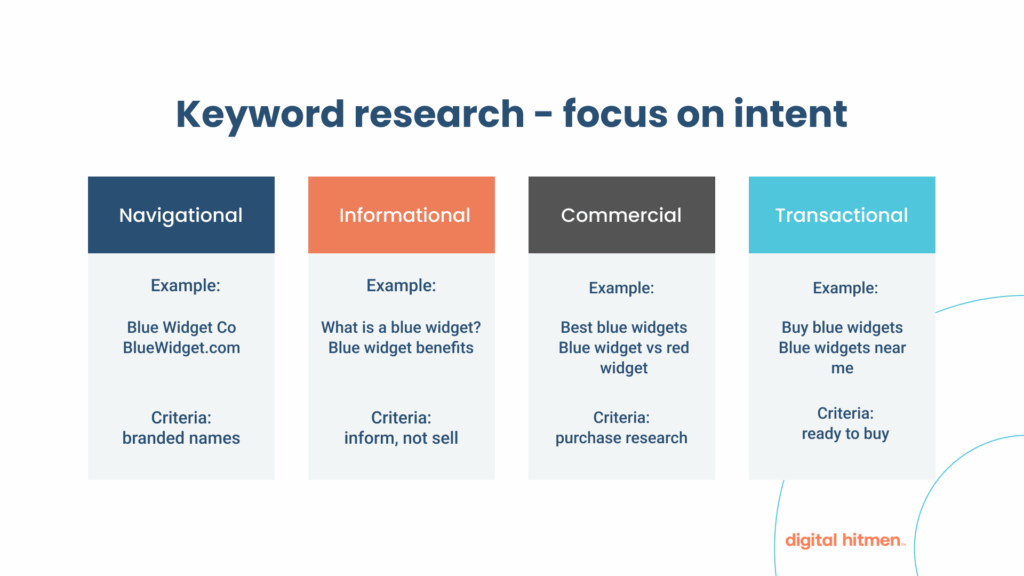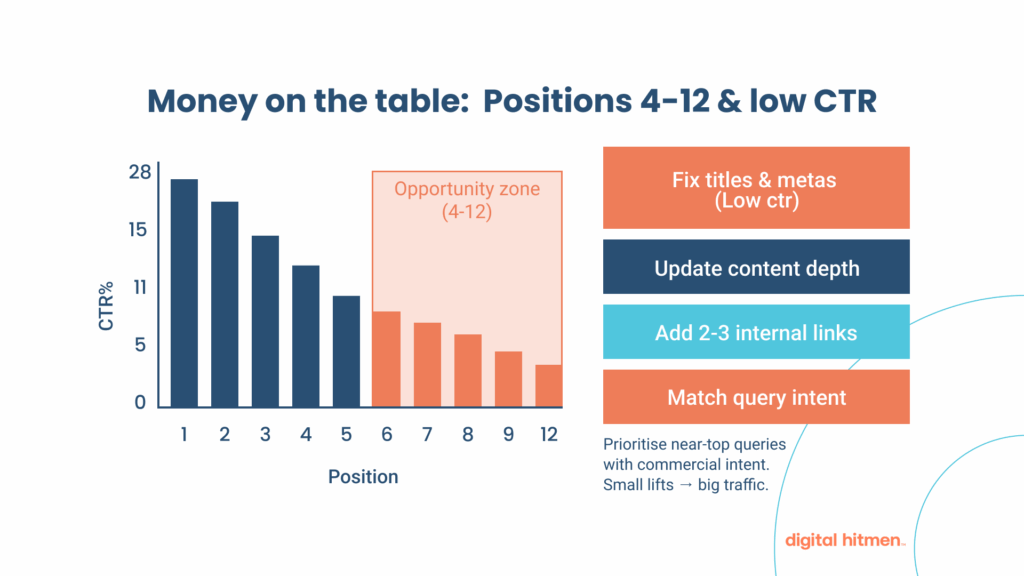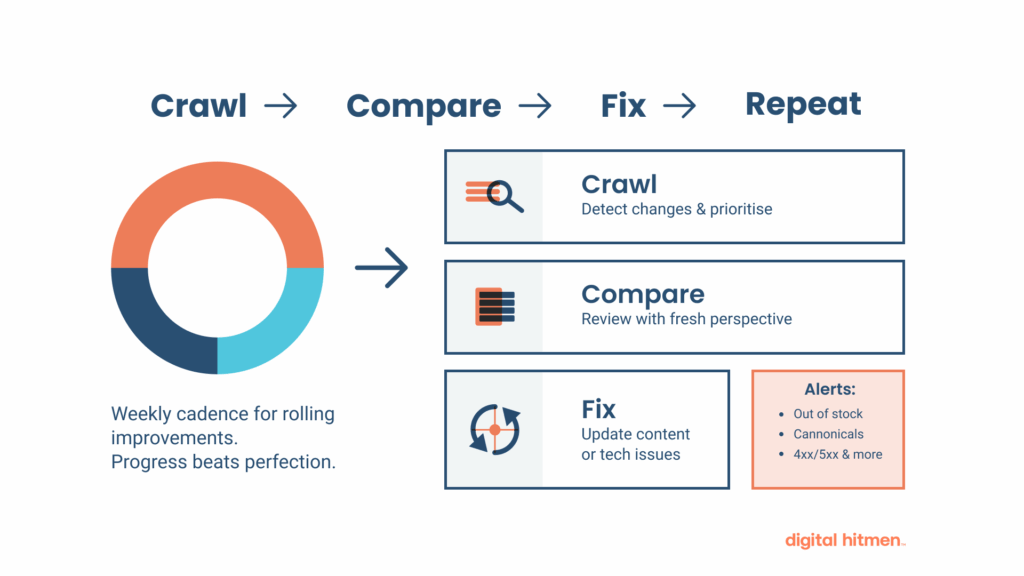Most of them aren’t! In 2025, too many marketers spend more time comparing dashboards than improving their websites. Tools don’t create rankings, decisions do.
You don’t need a dozen overlapping subscriptions. You need a lean setup that gives you clear data and helps you act fast. If a tool doesn’t help you write better content, fix real issues, or understand where your traffic is coming from, it’s not an investment, it’s decoration.
The smarter play? Simplify your stack. One reliable tool for tracking, one for crawling, one for keyword research, one for on-page optimisation, and Google’s free suite as your truth source. Everything else is noise.
Our SEO tool recommendations (2025)
Here’s the foundation of a modern, focused SEO toolkit, tools that matter, and nothing more:
- Free tools: Start with Google Search Console, Google Analytics 4, PageSpeed Insights, and Google Trends.
- Rank tracking: Focus on positions 4–12, where small updates can deliver huge traffic gains.
- Crawling: Run weekly audits with Screaming Frog or Sitebulb to find and fix issues early.
- On-page optimisation: Use Surfer, Clearscope, or Frase to refine clarity, not chase arbitrary scores.
- Keyword research: Target high-impression, low-click queries via SEMrush, Ahrefs, or Google Keyword Planner.
- Local SEO: Keep your Google Business Profile active, accurate, and reviewed to build trust.
- AI & automation: Use AI to speed up outlines and clustering, but keep human judgment for strategy.
- Stack philosophy: One reliable tool per job. Less noise, more focus.
1. Start with truth — Google’s free tools
Before you spend a dollar, master what’s free. Google already gives you the clearest lens into your SEO reality, and most businesses barely scratch the surface.
Your foundation starts with Google Search Console (GSC), where visibility meets data. It reveals which queries drive impressions, where you lose clicks, and what needs attention. Connect it to Google Analytics 4 (GA4) to see what happens after the click, conversions, behaviour, and true ROI. Then, use PageSpeed Insights and Lighthouse to evaluate performance, and Google Trends to identify what’s rising now, not last quarter.
Next step: Sync GSC and GA4. If you can’t link traffic to revenue, you’re guessing, not optimising.
2. Rank tracking that drives action
Ranking data is meaningless without decisions. The real gains live between positions 4–12, the “almost there” zone where small adjustments can double your traffic.
Focus on intent, not vanity. Refine your titles and meta descriptions for low-CTR keywords. Strengthen internal links to near-top pages, and check your search snippets for clickability. Review results weekly; minor improvements compound faster than full redesigns.
Next step: Audit five pages stuck between positions 4–12. Update and recheck in seven days.
Pro tip: Don’t chase #1 — chase click-through rate first.
3. Crawl → compare → fix → repeat
Your crawler is your early warning system. It spots issues before Google does; broken links, blocked pages, canonical mismatches, and structural regressions that quietly kill performance.
Run full crawls before and after every major update. Compare results side by side. Regressions are more dangerous than competitors, they quietly erode trust and visibility.
Next step: Schedule weekly crawls in Screaming Frog or JetOctopus. Fix red flags before Google finds them.
4. On-page optimisation, clear, not robotic
Forget keyword stuffing. Modern on-page SEO is about clarity and intent. If your intro answers the search query and every section adds genuine value, you’ve already won.
Tools like Surfer SEO or Frase are useful for structuring content, not for chasing scores. Prioritise human readability and logical flow. A page that educates and builds trust always beats one optimised for algorithms alone.
Next step: Rewrite intros, fix your H2s, and add two or three internal links. Check CTR after a week.
5. Keyword research — focus on intent
You don’t need 10,000 keywords. You need the 20 that matter, high intent, low clicks, and aligned with real customer demand. That’s where content gaps and opportunity live.
Export top queries from GSC. Sort by high impressions + low clicks. Those underperformers define your next round of landing pages, blog topics, and FAQs. Build from user behaviour, not from arbitrary lists.


Next step: Fill those content gaps with targeted landing pages and FAQs.
External resource: SEMrush Keyword Magic Tool
6. Local SEO — build trust, not tricks
Local SEO isn’t about stuffing suburb names. It’s about credibility, relevance, and clear signals that make Google trust your brand.
Build dedicated location pages with maps, reviews, and service details. Keep your Google Business Profile active and accurate, it’s your digital handshake with potential customers.
Next step: Reply to every review within 48 hours — it boosts visibility more than most backlinks.
7. AI & automation — speed up, don’t switch off
AI can’t think for you. It can only help you think faster. Use it to accelerate processes, not to replace judgment.
Let AI handle structure and synthesis, outlines, clustering, and internal linking ideas. But keep final decisions, tone, and strategy human. That’s what builds credibility and differentiates expertise.
Never for final thinking. Your experience and tone are what build trust.
Next step: Let AI assist with structure — you provide the insight.
8. Build your lean SEO stack
Complexity kills consistency. Keep one reliable tool for each job, and nothing more. Every extra dashboard adds noise, not clarity.
Recommended stack overview
| Category | Recommended tools |
|---|---|
| Rank tracking | SEMrush, SE Ranking, AccuRanker |
| Technical SEO | Screaming Frog, Sitebulb, JetOctopus |
| On-page optimisation | Surfer, Frase, Clearscope |
| Keyword research | SEMrush, Ahrefs, Google Keyword Planner |
| Free tools | Google Search Console, GA4, PageSpeed Insights, Lighthouse, Google Trends |
Next step: Choose one per category. Build a unified dashboard and cancel the rest. Clarity wins every time.
Final thoughts — clarity beats complexity
SEO isn’t about owning every tool under the sun. It’s about clarity, discipline, and consistent execution.
The brands that win in 2025 aren’t the ones running 20 dashboards, they’re the ones that act fast, fix what matters, and measure what counts. Build a lean SEO stack. Automate what you can, analyse what you must, and stay focused on the actions that move the needle.
Not feeling confident and want an expert to do this for you? Reach out to our SEO agency in Perth. Let’s talk!
Remember: Tools amplify judgment — they don’t replace it.
Keep your stack light, your data clean, and your decisions intentional.







